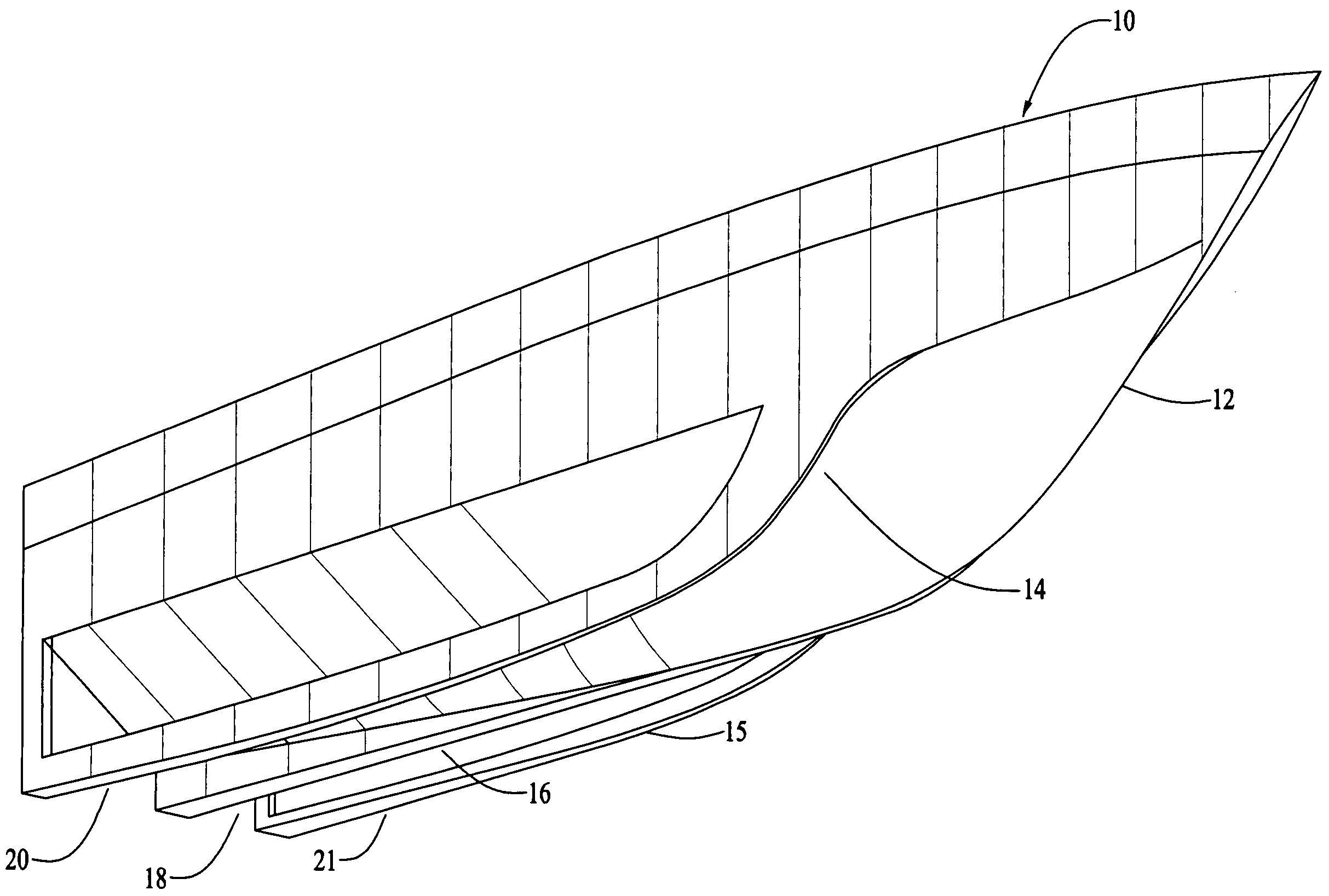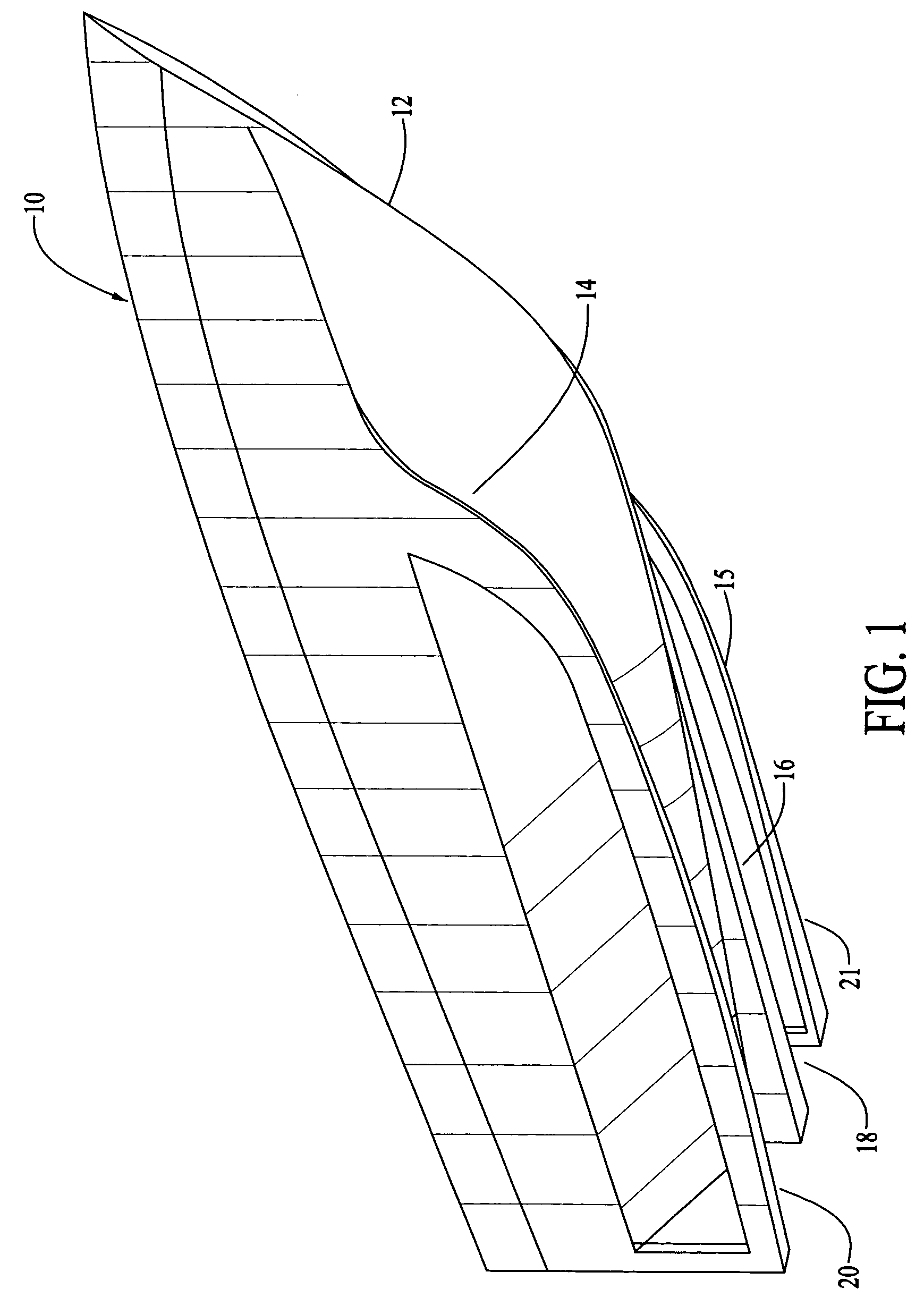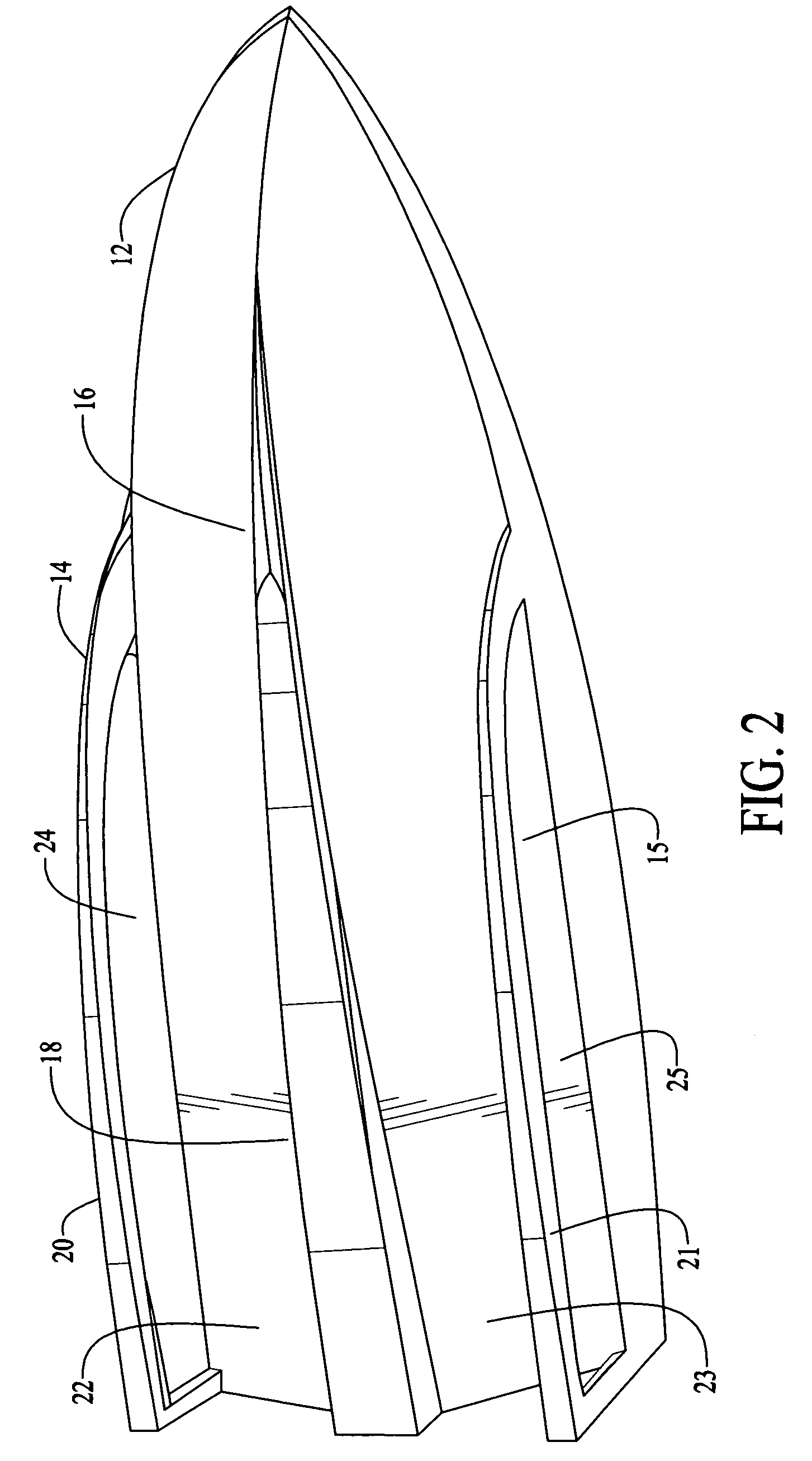Ported tri-hull boat
a tri-hull boat and port technology, applied in special-purpose vessels, vessel construction, transportation and packaging, etc., can solve the problems of affecting the use of the boat, and not having a smooth rid
- Summary
- Abstract
- Description
- Claims
- Application Information
AI Technical Summary
Benefits of technology
Problems solved by technology
Method used
Image
Examples
Embodiment Construction
[0022]
tri-hull boat10center hull12opposing pair of sponsons or skis14, 15.keel16center planing surface18outboard planing surfaces20, 21aft center hull structure22, 23sponson openings or ports24, 25planeP
DESCRIPTION OF THE PREFERRED EMBODIMENT(S)
[0023]Referring to FIGS. 1-6 the preferred embodiment of the present invention may be described. First referring primarily to FIGS. 1-4, shown is a tri-hull boat 10 includes a vessel having a generally vee-shaped center hull 12 with an opposing pair of sponsons or skis 14, 15. The center hull 12 at the chine has a keel 16 that runs longitudinally from the bow to the stern portions of the boat, and flattens out and substantially widens as it extends aft to form a center planing surface 18. Similarly the sponsons 14, 15 are vee shaped at the bow and flatten and widen towards the stern forming outboard planing surfaces 20, 21, all those planning surfaces 20, 21 and the central planning surface 18 being in approximately the same plane P. The dead...
PUM
 Login to View More
Login to View More Abstract
Description
Claims
Application Information
 Login to View More
Login to View More - R&D
- Intellectual Property
- Life Sciences
- Materials
- Tech Scout
- Unparalleled Data Quality
- Higher Quality Content
- 60% Fewer Hallucinations
Browse by: Latest US Patents, China's latest patents, Technical Efficacy Thesaurus, Application Domain, Technology Topic, Popular Technical Reports.
© 2025 PatSnap. All rights reserved.Legal|Privacy policy|Modern Slavery Act Transparency Statement|Sitemap|About US| Contact US: help@patsnap.com



